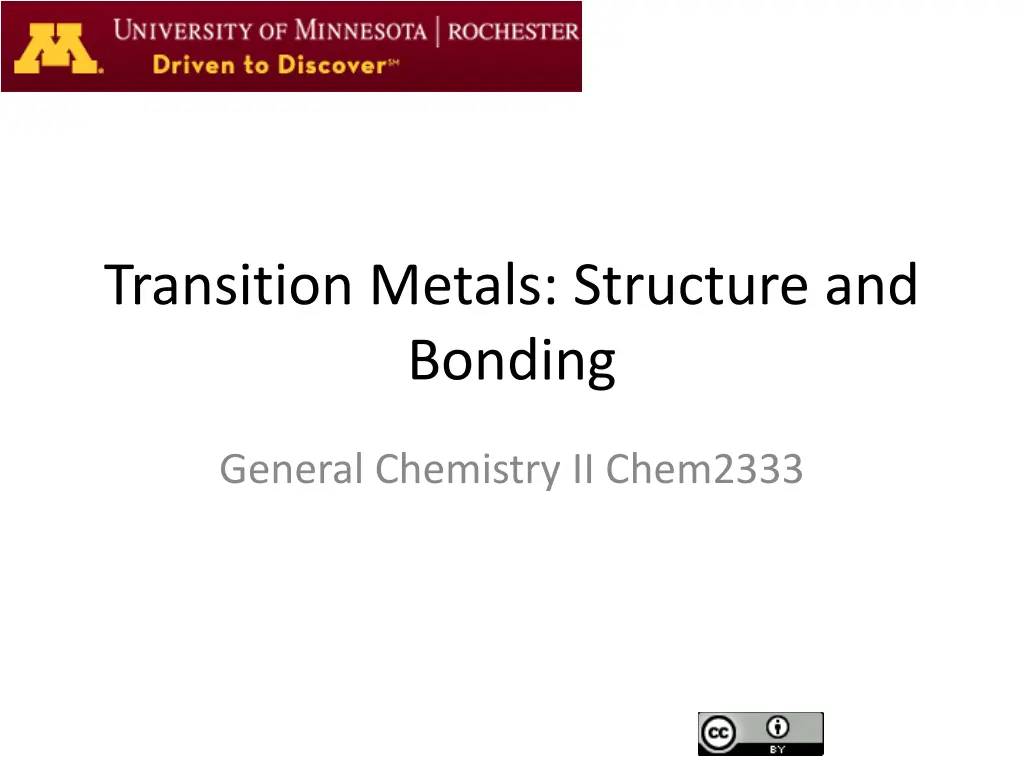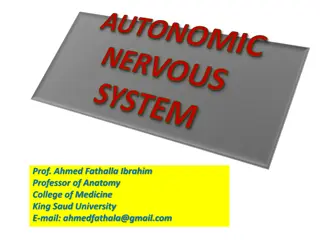
Understanding Theories of Bonding in Chemistry: Lewis Structures, VSEPR, Valence Bond Theory, Molecular Orbital Theory
Explore the various theories of bonding in chemistry, including Lewis structures, VSEPR theory, Valence Bond Theory, and Molecular Orbital theory. Understand how these theories predict molecular charge, structure, dipole moments, and more. Dive into concepts such as bond energies, magnetism, and the visualization of bonding patterns.
Download Presentation

Please find below an Image/Link to download the presentation.
The content on the website is provided AS IS for your information and personal use only. It may not be sold, licensed, or shared on other websites without obtaining consent from the author. If you encounter any issues during the download, it is possible that the publisher has removed the file from their server.
You are allowed to download the files provided on this website for personal or commercial use, subject to the condition that they are used lawfully. All files are the property of their respective owners.
The content on the website is provided AS IS for your information and personal use only. It may not be sold, licensed, or shared on other websites without obtaining consent from the author.
E N D
Presentation Transcript
Transition Metals: Structure and Bonding General Chemistry II Chem2333
Transition Metals Module 6 Session 3 1. Video 1: Reviewing theories of bonding. 1. We need a better description of bonding 2. Video 2: Lewis structures (videos from first semesters) 1. Video 3: Combining atomic orbitals. Hybrid orbitals (I). 1. Why hybrid orbitals and not just orbitals? 2. sp hybridization 2. Video 4: Hybrid orbitals (II) Chem 2333: General Chemistry II 2
The need for a better bonding theory There are some observations that we cannot explain with current theories of bonding. NiCO4 is tetrahedral Pt(CO)4 is square-planar Co admits six ligands but Ni only four. [Co(NH3)6]3+ is yellow and [Co(NH3)5Cl]2+ is purple [FeBr6]4- is paramagnetic (unparied electrons) and [Fe(CN)6]4- is diamagnetic (paired e) Chem 2333: General Chemistry II 3
Theories of bonding The main successes of each theory Theory Distinguish between cases Lewis structures N2 bond is stronger BF3 is non-polar F2 is weaker NH3 has a dipole VSEPR theory Valence Bond Theory There are two E and Z 1,2-dichlorethene. C-C doesn t rotate 1,2-dichloroethane rotates around C-C Molecular orbital theory N2 is not attracted by magnets O2 is attracted by magnets Chem 2333: General Chemistry II 4
Theories of bonding For each of these questions you first need to know what theory will give you the answer Which of the following compounds has the shortest bond between nitrogen and oxygen? Which of the following formulas represent substances that are likely to be stable at ordinary temperature and pressure? a. BF5 b. BrF5 c. NCl3 d. OF2 e. SF4 a. NO3- b. N2O c. NOCl d. H3NO Which of the following has the smallest H-X-H bond angle? a. PH3 b. NH4+ c. C2H4 d. H2S Which of the following molecules is nonpolar? a. BrF3 b. NF3 c. BF3 d. OF2 Which of the following molecules has the longest bond? a. O2 b. O2+ c. O2- d. O22- Chem 2333: General Chemistry II 5
Theories of bonding Different theories for the same problem. One is not necessarily better than the other. They will answer different questions or may have different disadvantages or pitfalls Theory Predict molecular charge Predict molecular structure Predict molecular dipole Predict rotation of bonds Displays an accurate bonding pattern Predicts bond energies Predicts magnetis m of molecules Easy to visualize and little math Lewis Structures VSEPR Valence Bond Theory Molecular Orbital Theory Chem 2333: General Chemistry II 6
Valence Bond Theory: Themes Hydrogen, H2 1. A set of overlapping orbitals has a maximum of two electrons that must have opposite spins. Hydrogen fluoride, HF 2. The greater the orbital overlap, the stronger (more stable) the bond. HF > HCl 3. The valence atomic orbitals in a molecule are different from those in isolated atoms. 4. There is a hybridization of atomic orbitals to form the molecule. Fluorine, F2 Chem 2333: General Chemistry II 7
Valence Bond Theory: Hybridization It was postulated that the valence atomic orbitals could hybridize before bonding took place one hybridization of C is to mix all the 2s and 2p orbitals to get 4 orbitals that point at the corners of a tetrahedron Chem 2333: General Chemistry II 8
Valence Bond Theory: Hybridization Key Points The number of hybrid orbitals obtained equals the number of atomic orbitals mixed. The type of hybrid orbitals obtained varies with the types of atomic orbitals mixed. Types of Hybrid Orbitals sp sp2 sp3 sp3d sp3d2 Chem 2333: General Chemistry II 9
Valence Bond Theory: Hybridization The sp hybrid orbitals in gaseous BeCl2 Chem 2333: General Chemistry II 10
Valence Bond Theory: Hybridization The sp2 hybrid orbitals in BF3. Chem 2333: General Chemistry II 11
Valence Bond Theory: Hybridization The sp3 hybrid orbitals in CH4. Chem 2333: General Chemistry II 12
Valence Bond Theory: Hybridization The sp3d hybrid orbitals in PCl5. Chem 2333: General Chemistry II 13
Valence Bond Theory: Hybridization The conceptual steps from molecular formula to the hybrid orbitals used in bonding. Step 1 Step 2 Step 3 Molecular shape and e group arrangement Molecular formula Lewis structure Hybrid orbitals What is the hybridization on the N atom in NO2-and in NO3-? a. sp2for NO2-and sp3for NO3- b. sp3for NO2-and sp2for NO3- c. sp for NO2-and sp2for NO3- d. sp2for both Do the same between CO2 and CO32- Chem 2333: General Chemistry II 14






















